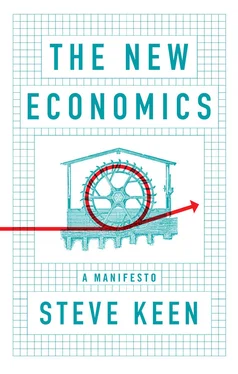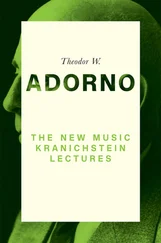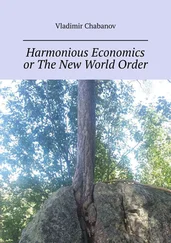Therefore, … the special form of Mr. Keynes’ theory becomes valid. A rise in the schedule of the marginal efficiency of capital only increases employment, and does not raise the rate of interest at all. We are completely out of touch with the classical world. (Hicks 1937, p. 154; see also Hicks 1935; 1981) 8
The schism between Hicks’s purported model of Keynes and Keynes’s own views was so great that it gave rise to the key heterodox school of thought, ‘Post Keynesian Economics’. So ‘the Keynesian revolution’ didn’t happen, though Post Keynesians themselves have developed approaches to economics that are revolutionary (Eiteman 1947; Godley 1999; Goodwin 1967; Graziani 1989; Keen 2020b; Minsky 1977; Moore 1979; Sraffa 1926, 1960). But a revolution in mainstream economic thought, like the rejection of Ptolemy’s earth-centric vision of the solar system and its total replacement by Copernicus’s sun-centric vision, has not happened.
The above paints a bleak picture of the prospects of replacing Neoclassical economics with a fundamentally different and far more realistic paradigm. But there have been changes over time that make this more feasible now than it was at Keynes’s time.
Foremost here is the development of the computer, and computer software that can easily handle large-scale dynamic and even evolutionary processes (Gooding 2014). These developments have occurred outside economics, and especially in engineering, physics and meteorology. There are limitations of the applicability of these techniques to economics, largely because of the fact that economics involves human behaviour rather than the interaction of unconscious objects, but these limitations distort reality far less than the Neoclassical fantasy that economic processes occur in or near equilibrium. 9
The development of the Post Keynesian school of thought after the Great Depression is also crucial. There were strident critics of the Neoclassical mainstream before the Great Depression, such as Joseph Schumpeter and Thorstein Veblen (Schumpeter 1928; Veblen 1898, 1908, 1909), but there was no truly revolutionary school of economic thought. 10The development of this heterodox school over the eight decades between the Great Depression and the GFC meant that, when that crisis struck, there were coherent explanations of it – indeed, prescient warnings of it (Godley 2001; Godley and Izurieta 2002; Godley and Wray 2000; Keen 1995, 2006, 2007) – that did not exist when Keynes attempted his revolution.
Modern Monetary Theory (MMT), which arose out of interactions between the entrepreneur Warren Mosler (Mosler 1998, 2010) and a group of Post Keynesian economists – primarily Randy Wray (Wray 1994, 1997, 1998), Stephanie Kelton (Bell 2000, 2001), Scott Fullwiler (Fullwiler 2003, 2005) and Bill Mitchell (Mitchell 1987, 1994; Mitchell and Mosler 2002; Mitchell and Watts 2002) – has also done something that has not been achieved since Keynes: it has made the public at large aware of a distinctly non-Neoclassical approach to economics. A non-Neoclassical economics book, Stephanie Kelton’s The Deficit Myth (Kelton 2020), has become a best-seller, ranking in the top 300 on Amazon on its debut. MMT is challenging the stranglehold that the Neoclassical school has on public opinion, and their myriad protestations about MMT are a sign that they are, for once, worried about losing their dominance.
Similarly, non-Neoclassical scholars like Mariana Mazzucato (Mazzucato 2015, 2019), Bill Janeway (Janeway 2012) and Kate Raworth (Raworth 2017) have, if not broken the hold that the Neoclassical meme of ‘supply and demand’ has on how the public thinks about economics, at least shaken it by showing that there are alternative, and empirically grounded, ways to thinking about the public and private sector’s roles in innovation, and the dependence of the economy on the environment. Statistically-oriented researchers like Schularick, Jordà, Taylor and Bezemer are analysing issues, such as the role of credit in macroeconomics, which are ignored by Neoclassical econometricians (Bezemer and Grydaki 2014; Jordà et al. 2011, 2019; Schularick and Taylor 2012; Zhang and Bezemer 2014). Some mathematicians have become aware of fundamental fallacies in economics, such as the timeless, ‘ergodic’ foundations of Neoclassical finance theory (Peters 2019; Peters and Gell-Mann 2016) and are actively working on alternative approaches (Costa Lima et al. 2014; Grasselli and Costa Lima 2012; Grasselli and Nguyen-Huu 2018).
Finally, social media has allowed student movements critical of Neoclassical economics to evolve, flourish and persist in a way that was impossible before the Internet. I led the first ever student revolt against Neoclassical economics, at Sydney University in 1973 (Butler et al. 2009). 11This revolt succeeded, in that the University finally agreed to create a Department of Political Economy to house the dissidents, but the protest and its success were restricted to just one university in far-away Australia. French students established the ‘Protest Against Autistic Economics’ in 2000, which had somewhat more traction, but no changes in economics teaching occurred: its main legacy was an online journal called the Real World Economic Review .
The real breakthrough came with a protest by economics students at the University of Manchester 12in the UK in 2012, in response to the failure of their teachers to take the GFC seriously in their macroeconomics courses. As they put it, ‘The economics we were learning seemed separate from the economic reality that the world was facing, and devoid from the crisis that had made many of us interested in economics to begin with’. Their Post-Crash Economics movement in turn spawned the international Rethinking Economics campaign, which now has groups in about 100 universities across the world (you should join one, if you’re not already a member), and inspired the Institute for New Economic Thinking to fund the Young Scholars’ Initiative.
There are therefore students eager for approaches to economics that break away from the Neoclassical mainstream, methods of analysis which can easily supplant the dated equilibrium methods used by Neoclassical economics, and rival schools of thought with an intellectual tradition spanning almost a century, on which an alternative paradigm can be constructed. What we lack is a university system in which these conditions can foment a paradigm shift, as has occurred several times in physics in the last one and a half centuries, but not once in economics.
Fortunately, the GFC was such an extreme shock to the policy bodies around the world, which were and are still dominated by Neoclassical economists, that at least some of them – such as the OECD, which established the unit New Approaches to Economic Challenges (NAEC) in 2012 (see https://www.oecd.org/naec/) – have started to explore alternative approaches, including the application of ideas from other disciplines (largely physics, engineering and computer programming) to economics. Change is more likely to come from these institutions than from within academic economics itself, though even here, the alternative approaches experience hostility from entrenched Neoclassical economists.
There is also one negative factor that may finally force the change needed in economics, which is closer to the Reformation of a degenerate religion than a standard scientific revolution (Elliott 2017). Climate change is the dominant issue for the human species – and all other species – during the twenty-first century, and the work that Neoclassical economists have done on climate change is, in my considered opinion, the worst work they have ever done (Keen 2020a). And yet Neoclassical economists gave their highest accolade, the deceptively named ‘Sveriges Riksbank Prize in Economic Sciences in Memory of Alfred Nobel’, to the chief proponent of this work, William Nordhaus. When reality exposes how low grade and utterly misleading this work has been, the revulsion that policymakers and the public will feel at how they have been deceived by economists may finally terminate Neoclassical economics.
Читать дальше












